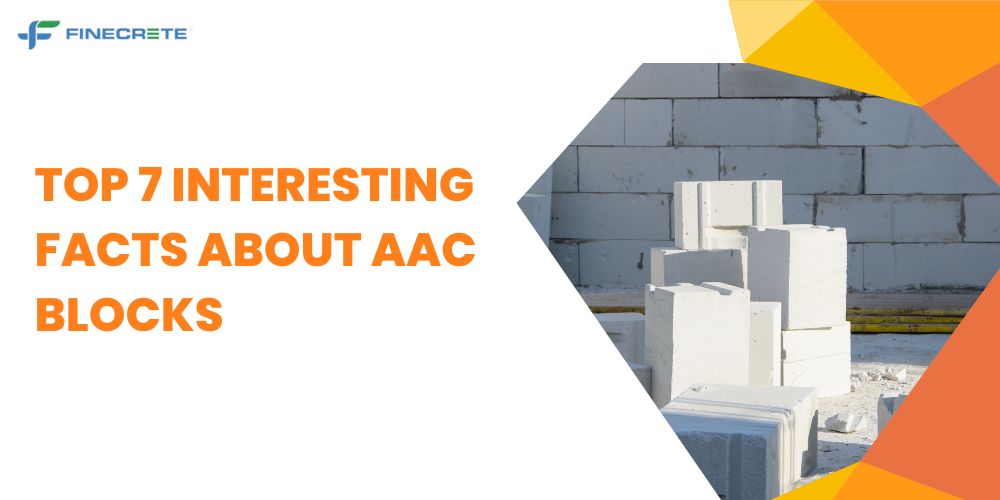AAC (Autoclaved Aerated Concrete) blocks have gained popularity in the construction industry due to their numerous benefits. These are lightweight and versatile building materials. These offer a range of advantages over traditional bricks and concrete blocks. Go through some interesting facts about AAC blocks and find out what makes them a fascinating choice for construction projects.
- Production of AAC involves less energy consumption:
The manufacturing process of AAC blocks involves a chemical reaction between:
- Lime,
- Cement,
- Water, and
- Aluminum powder.
This creates millions of tiny air cells within the mixture. These air cells contribute to the lightweight nature of AAC blocks and reduce the amount of raw materials needed. It results in lower energy consumption during production.
- AAC blocks are energy efficient through entire lifecycle:
The benefits of AAC blocks extend beyond their manufacturing process. Due to their excellent thermal insulation properties, AAC blocks help to maintain a consistent indoor temperature. It reduces the need for excessive cooling or heating. It helps in saving energy and reducing utility costs throughout the lifespan of the building.
- AAC blocks are much larger and lighter than traditional bricks:
Compared to traditional bricks, these are approximately 10 times larger in size. This means that fewer blocks are required to cover the same area. This leads to faster construction and lower labor costs.
Further, AAC blocks are roughly 50% lighter than traditional bricks. This makes them easier to move and install.
- AAC blocks have fewer joints:
Traditional brickwork often requires numerous joints, which can be time-consuming and sometimes result in weak points in the structure.
However, AAC blocks can be installed using unfilled head joint technology and a thin bed joint. This significantly reduces the number of joints required. It not only saves time and effort during construction but also enhances the overall strength and durability of the building.
- AAC blocks have consistent dimensions:
Unlike traditional bricks, which can have variations in size and shape, AAC blocks have consistent dimensions. This uniformity allows for a quicker and more efficient erecting process. Builders can plan and execute their construction projects with greater precision. It can lead to a faster completion time and reduced labor costs.
- AAC blocks have comparatively low compressive strength:
The compressive strength of AAC blocks typically ranges from 3 to 5 N/mm2, depending on the density. Although AAC blocks have lower compressive strength compared to some traditional construction materials, such as concrete, their strength is still sufficient for most building applications. This strength, combined with their lightweight nature, makes these blocks an ideal choice for both load-bearing and non-load-bearing walls.
- AAC blocks are much stronger than bricks with same density:
While AAC blocks may have a lower compressive strength compared to concrete, they are significantly stronger than bricks that have the same density. This means that AAC blocks can withstand greater external forces without compromising the structural integrity of the building. The increased strength of these blocks contributes to safer and more robust construction.
Today, AAC blocks stand as a versatile and reliable building material. These are likely to play a significant role in shaping the future of construction.






